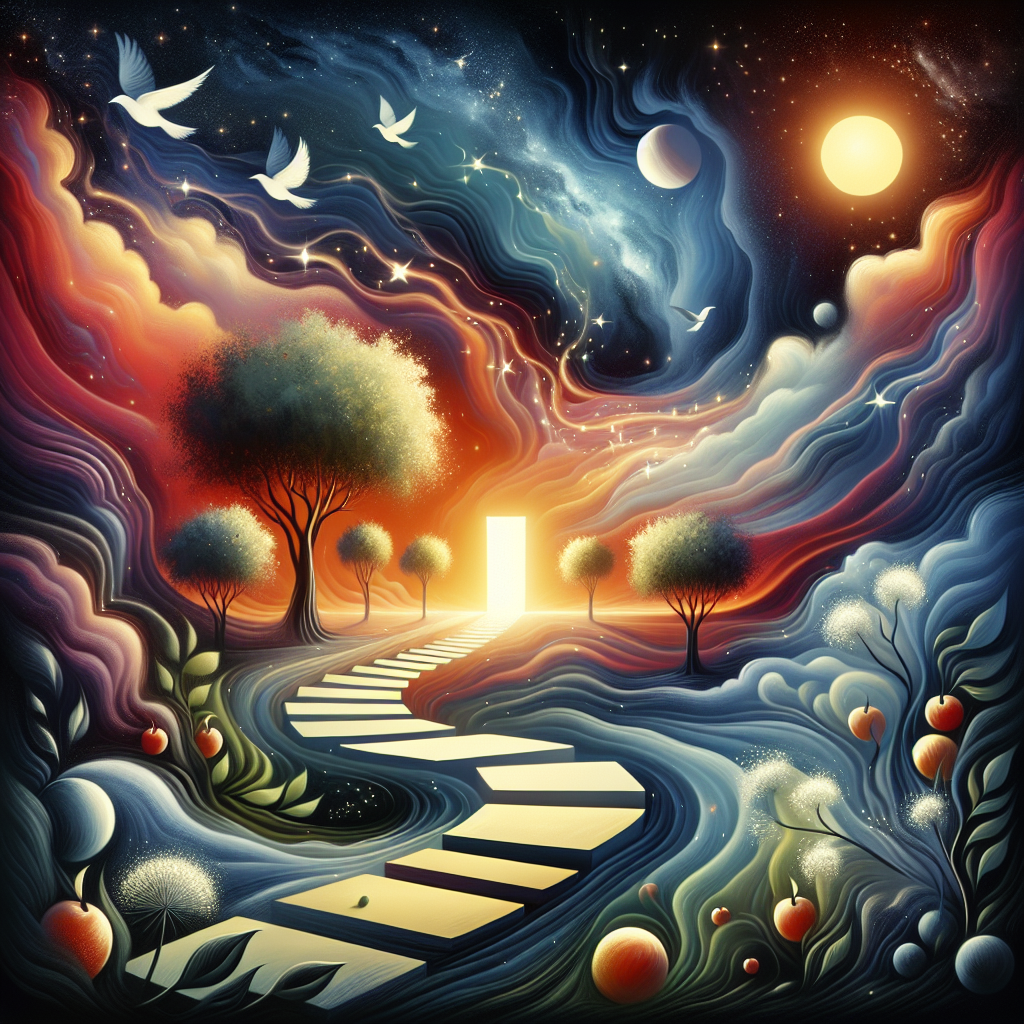About Oneiroglossa:
Oneiroglossia is a project that explores conversations in the oldest language known to humanity: dreams. This project reverse-engineers dreams. While dreams are popularly used for interpretation and finding its meaning, I used meaning (words) to generate a dream instead. Through this process, I aim to uncover how the subconscious communicates with us through metaphors, symbols, and poetry.
For example, consider a dream where one is being chased by an animal. Traditionally, this might be seen as "running away" from one's natural instincts. Viewed in reverse, if the subconscious wanted to convey that message, it would present a dream of being chased by an animal.
Thus, this project reveals the dream creation process of the subconscious.
In a world where subconscious communication between people is possible, we can envision conversations conducted through such dreams. This project draws parallels to such a world.
Phase 1
At its core, the process of the first phase of this project is elegantly simple. It is a chatbot interface between two people, allowing them to communicate solely through images. Powered by an OpenAI DALL-E backend, the prompts used to generate these images are carefully modified such that the resulting images are rich in symbols, metaphors, and poetry, drawing inspiration from Jungian and other dream philosophies. This leads to an image-only conversation between two people in the language of dreams.
Here is one of the chats:
Screen-recording:
Screen-shots









Generated dreams:









Phase 2
The second phase involved fine-tuning a large language model (LLM) using many of my own dreams and some of my personal background, then asking it to generate a new dream for me. This exploration also included discovering my unique, personal interpretation of the new dream.
The generated dreams were displayed in a fully immersive VR environment, creating the sensation of being inside a dream. Consequently, this project not only investigates how dreams are generated but also creates a sort of "Dreaming Hub" where one can generate new dreams catered to a particular individual.
An example of the dream generated in oneiroglossa phase-2 is as follows:
"A dense forest with trees shimmering in neon blue and green hues. The air hums with a soft, electronic pulse. In a clearing stands a towering, ancient structure that is a fusion of organic and technological elements. Climbing the intricate lattice of the structure, each step resonates with the rhythm of a distant drum. At the summit, there is a large, reflective surface projecting a beam of light into the sky. Inside the beam, interconnected symbols and images—memories, ideas, and visions—merge into a cohesive pattern. The scene shifts to a tranquil space surrounded by bells, each tolling in harmony, creating a feeling of unity and interconnectedness"
The corresponding generated VR dream (using Blockade Labs and Meta Quest) is below:
My personal interpretation for the same:
I am in nature, in a dense chaos of figuring out how to connect art and tech with consciousness. The beam represents the enlightening goal. To reach there a path of symbology, dreams and visions pave the way. The bells tolling talks about the connections and the harmony I have with others in the path. #growTogether.
Phase 3
In the next phase, I made a prototype of how dreams could help resolve trauma, thereby heal the life of a person. In this hypothetical scenario, a list of 5 childhood traumas of "Yoannia Ghar" is listed. By watching the dreams corresponding to each trauma (hovering over the trauma card), the trauma could potentially be resolved. I use the same dream language prompts here. As an when a trauma is resolved, the final-biography of Yoannia changes as shown by the text at the bottom. This tries to show how life could be better through trauma resolution.
P.S: Although I use the word "trauma" here, this could apply to any aspect of the shadow self. It doesn't necessarily have to be a high impact event from the past, but could also be smaller vices like sugar addiction etc. In some of my previous works, I use the word "knots" instead of "trauma".
Phase 4
In the next phase I explored how shared dreams images could be combined to form a single image which could represent a collective consciousness.
A generative sculpture called "Oneiros" was created as a result:
Oneiros is a shared-dream 3D sculpture that evolves in real time from the dreams of three individuals. Each individual's dreams are attached to the sculpture in real time as it evolves. The combination of all three dreams is transformed into a single image, which is displayed on the VR headset of the base model. The sculpture thus showcases a collective consciousness formed by the merging of subconscious images from three different individuals.
Phase 5
Phase 5 of Oneiroglossa explores the spectrum of states of consciousness in project "O". More details on this phase can be found here.
Phase 6
Phase 6 of Oneiroglossa is Numasync, a large-scale installation and research system on vision/dream sharing. Read more here.
